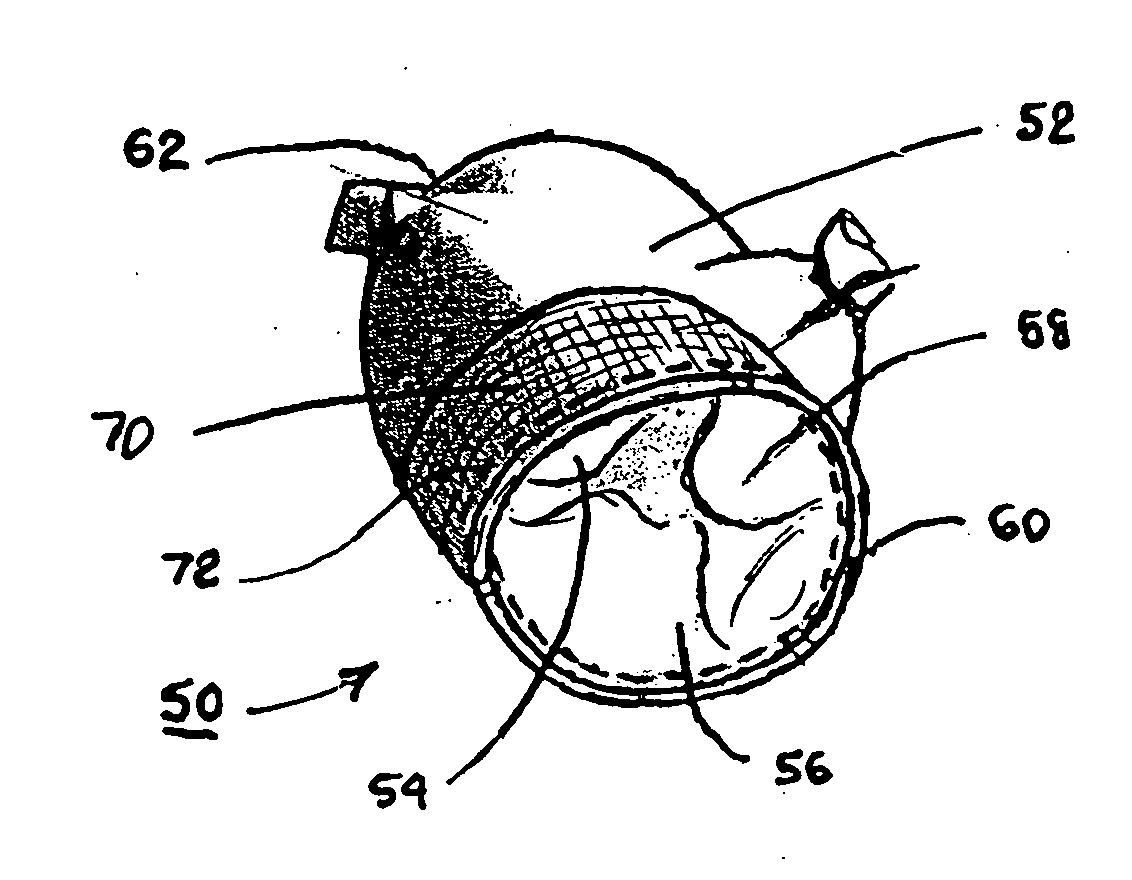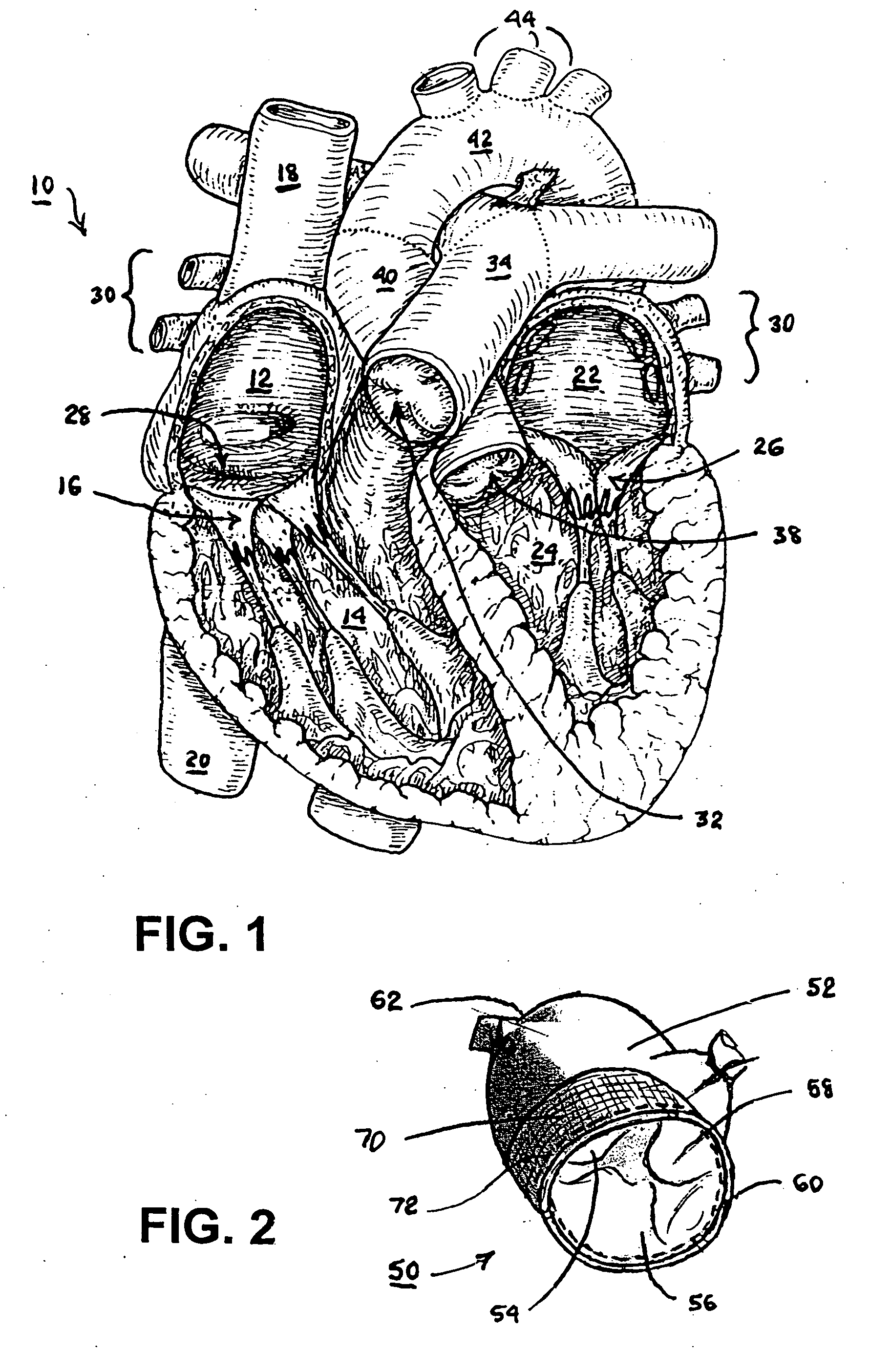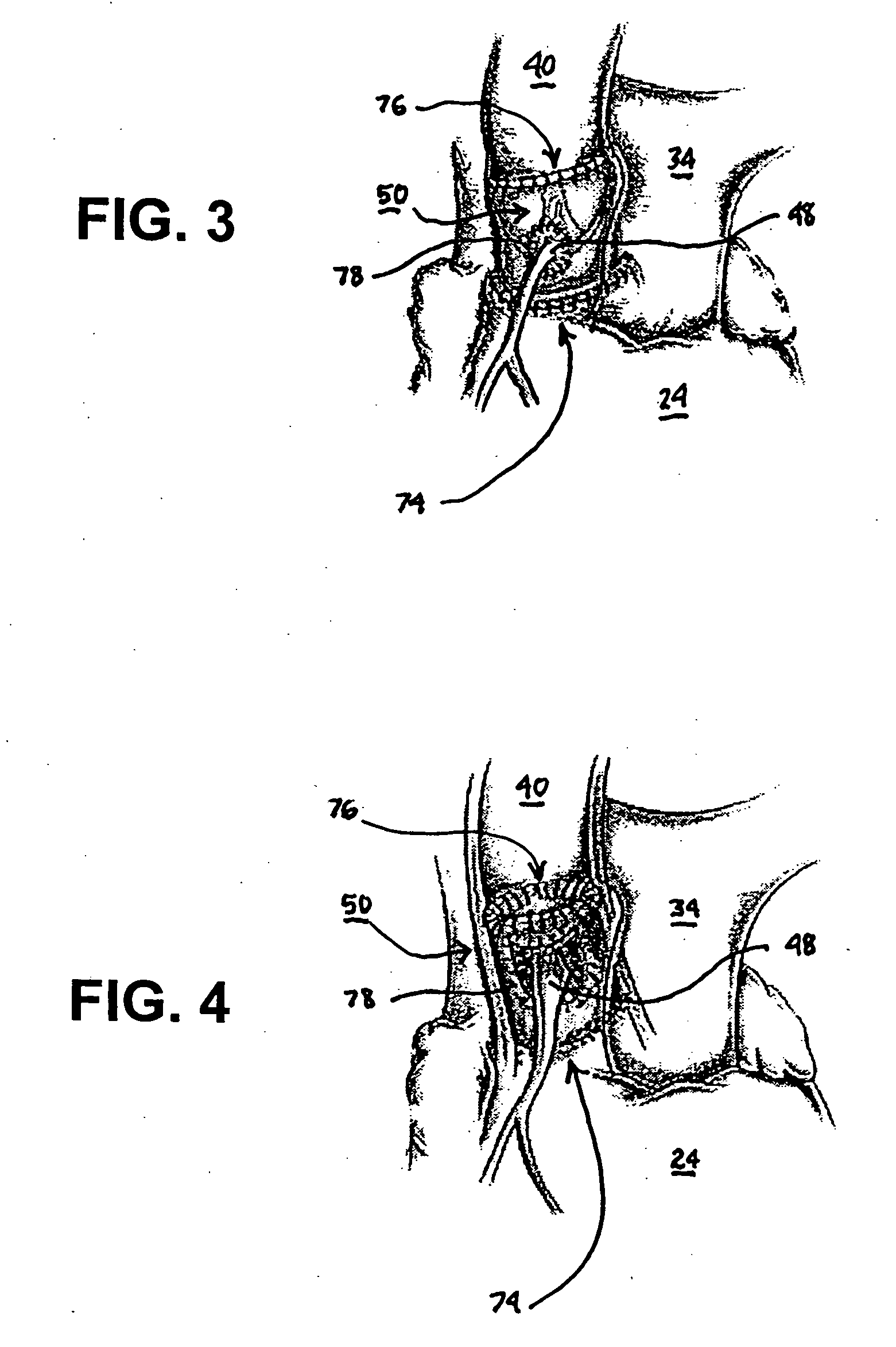Fibrin sealants and platelet concentrates applied to effect hemostasis at the interface of an implantable medical device with body tissue
a technology of implantable medical devices and concentrates, applied in blood vessels, prostheses, bandages, etc., can solve the problems of affecting the hemostasis of the stem, affecting the hemostasis of the patient, and complicating the recovery of the patient, etc., and achieve the effect of stem bleeding
- Summary
- Abstract
- Description
- Claims
- Application Information
AI Technical Summary
Benefits of technology
Problems solved by technology
Method used
Image
Examples
Embodiment Construction
[0034] In the following detailed description, references are made to illustrative embodiments of methods and apparatus for carrying out the invention. It is understood that other embodiments can be utilized without departing from the scope of the invention. As noted above, the present invention may be advantageously employed at surgical sites or traumatic injury sites to stem bleeding.
[0035] The heart 10 depicted in FIG. 1 comprises two right heart (pulmonary heart) chambers and two left heart (systemic heart) chambers. The pulmonary heart includes the right atrium 12, the right ventricle 14, and the tricuspid valve 16 separating the right atrium 12 and right ventricle 14. The systemic heart includes the left atrium 22, the left ventricle 24 and the bicuspid or mitral valve 26 separating the left atrium 22 and the left ventricle 24. Cardiac cycles are marked by synchronous contraction (systole) and relaxation (diastole) of the atria and ventricles. At the beginning of a cardiac cyc...
PUM
| Property | Measurement | Unit |
|---|---|---|
| Pressure | aaaaa | aaaaa |
| Mass | aaaaa | aaaaa |
| Biocompatibility | aaaaa | aaaaa |
Abstract
Description
Claims
Application Information
 Login to View More
Login to View More - R&D
- Intellectual Property
- Life Sciences
- Materials
- Tech Scout
- Unparalleled Data Quality
- Higher Quality Content
- 60% Fewer Hallucinations
Browse by: Latest US Patents, China's latest patents, Technical Efficacy Thesaurus, Application Domain, Technology Topic, Popular Technical Reports.
© 2025 PatSnap. All rights reserved.Legal|Privacy policy|Modern Slavery Act Transparency Statement|Sitemap|About US| Contact US: help@patsnap.com



